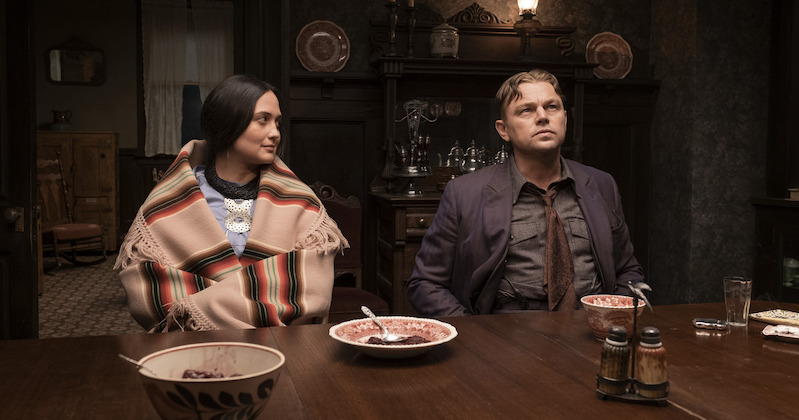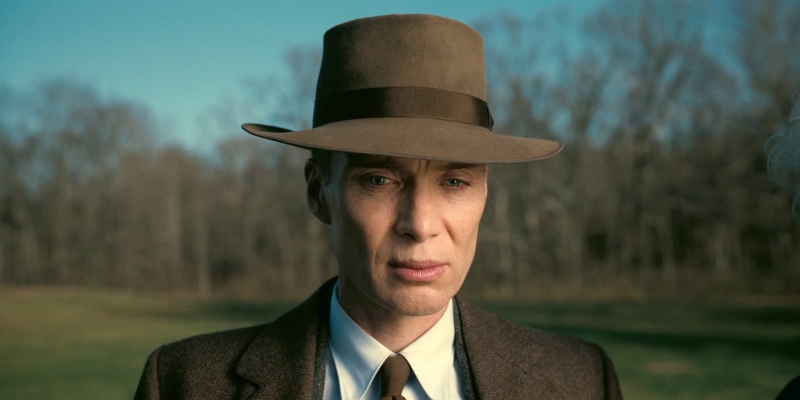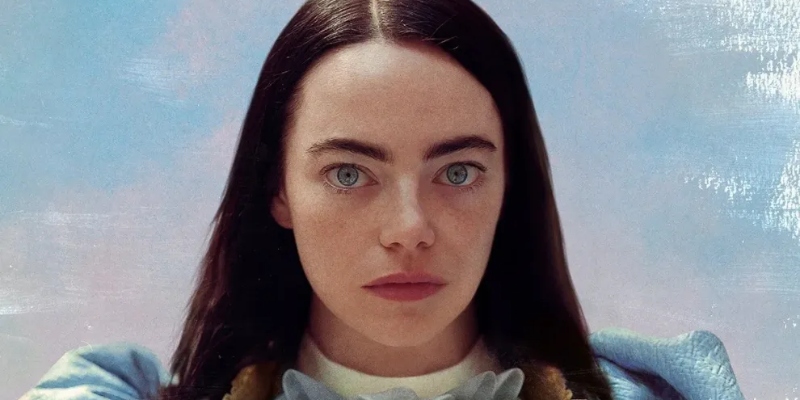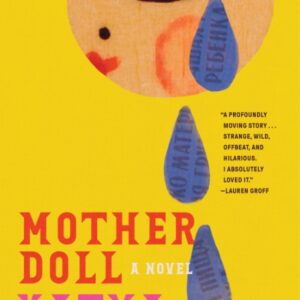A film based on a significant literary work hasn’t taken home an Academy Award in over 10 years. But the occurrence rate for Oscar nominations bestowed upon literary adaptations has remained constant since the very first ceremony. Adam Morgan crunched the numbers at the Chicago Review of Books back in 2017 and found that among Best Picture winners, the adaptation to original screenplay ratio averages out to 53%/47%. The same number holds when you expand the figures to the total pool of all Best Picture nominees.
This year, adaptations make up five of the 10 nominees for Best Picture, far more than 2023, 2021, and 2019’s ceremonies, where just two or fewer literary adaptations were nominated. 2024’s Best Picture slate should put literary complaints about the Oscars to rest. But are any of the nominees truly worth celebrating on their own merits? Do the adaptations retain their source material’s literary value? Are the source texts themselves of quality in the first place? And what about the literary value of the original screenplays? Let’s dig in to it all.
*
The Academy Award for Best Picture: The Adaptations

American Fiction
Based on the novel Erasure by Percival Everett
Nominated for: Best Picture, Best Actor (Jeffrey Wright), Best Supporting Actor (Sterling K. Brown), Adapted Screenplay, Original Score
To my mind, the banner literary news surrounding the 2024 Oscars is the Best Picture nod for American Fiction. Even though Percival Everett, the author of writer-director Cord Jefferson’s source material, wasn’t directly nominated, it’s heartening to see such a hugely deserving literary force recognized. It would be technically incorrect to label a writer “underrated’ after he has been awarded a Guggenheim fellowship, named a finalist for the Pulitzer prize, and shortlisted for both a Booker and a National Book Critics Circle Award, but to his fans, Everett’s wry, direct, unsettling, hilarious, and brilliantly conceptual work feels like the best kept secret in American letters.
Erasure follows Thelonious “Monk” Ellison (Everett’s name-play is unmatched), a literature professor and author of several erudite, high brow books that, let’s say, don’t take pains to court a general readership. Incensed over the success of the latest so-called “ghetto novel,” We’s Lives in Da Ghetto, he decides to write his own to shame the ignorant, carnivorously racist literary establishment. But My Pafology, later retitled Fuck, becomes the next smash hit.
Everything from the A-list cast to the bland retitle suggested that American Fiction might have undertaken a classic prestige bait and switch—to prune the thorns off the rose so Oscar voters feel more comfortable raising it up for acclaim. But evidence of Everett’s teeth remain like gnash-marks throughout the screenplay. Jefferson retains Everett’s bold questioning of whether there might be more dimensionality to stories that appear self-exploitative and tokenizing. But his adaptation falters where many adaptations falter, in the paring away of structural scaffolding that seemed cosmetic but proves to be integral. Everett prints the entirety of Fuck within Erasure. The text within the text becomes a convex mirror, reflecting distorted visions of the characters and their shifting ideologies. American Fiction, in withholding such a disclosure—in perpetrating such an erasure, if you will—remains ideologically fixed. It is a smart movie, and a funny one. But Percival Everett gets the last laugh.

Killers of the Flower Moon
Based on the book Killers of the Flower Moon: The Osage Murders and the Birth of the FBI by David Grann
Nominated for: Best Picture, Best Director (Martin Scorsese), Best Actress (Lily Gladstone), Best Supporting Actor (Robert De Niro), Production Design, Costume Design, Cinematography, Editing, Original Score, Original Song (“Wahzhazhe (A Song For My People)”)
Killers of the Flower Moon tells the true story of the systematic deception, exploitation, and extermination of the oil-rich Osage tribe of Oklahoma by a town full of greedy, remorseless white settlers. Adapted from the 2016 book of the same name by the journalist David Grann, Scorsese matches the book’s epic scope and ambition in chronicling, as the subtitle puts it, The Osage Murders and the Birth of the FBI. But he jettisons the rescue plot to focus on the predators, their prey, and the black rot their entanglement exposes at the foundation of the American enterprise. Grann’s meticulous historical research provided the sketches by which Scorsese traced the baroque, richly detailed world of his film. But it’s actually Grann’s faculty for clear and propulsive narrative storytelling that brings Scorsese’s Killers to life.
Seven decades into his career as a filmmaker and Scorsese’s mastery of the technology of cinema is utter and unshakeable. He has mined the veins of American ignorance, arrogance, innocence, and savagery down to the bedrock. He knows his capacity, his characters, and their contexts. And that’s what got in the way here. The needle-point prick in the tapestry that triggers a chain of unraveling even as Scorsese frantically knits toward an impossible conclusion. Grann’s vision of the slow genocide of the Osage people by their treacherous white neighbors and loved ones is straightforward and unclouded, structured as it was by a trove of primary sources.
Scorsese meanwhile finds himself caught between two poles: the characters (the Osage) whom he knows he must deeply access yet either cannot or, out of a genteel deference, does not, and then the towering archetypes (De Niro and DiCaprio’s characters) whose accumulated familiarity and resonance within his oeuvre threatens to engulf his attention entirely. At the same time, it is Scorsese’s very internal divisions that animate Killers with an operatic ferocity that Grann’s book, for all its order and moral clarity, cannot reproduce. The two are best taken together: Grann’s book instructs, and Scorsese’s film compels.

Oppenheimer
Based on: American Prometheus: The Triumph And Tragedy of J. Robert Oppenheimer by Kai Bird and Martin Sherwin
Nominated for: Best Picture, Best Director (Christopher Nolan), Best Actor (Cillian Murphy), Best Supporting Actor (Robert Downey Jr.), Best Supporting Actress (Emily Blunt), Adapted Screenplay, Production Design, Costume Design, Cinematography, Editing, Makeup and Hairstyling, Sound
Echoing the philosopher Paul Ricœur, Agnes Varda once stated that “cinema is light and time.” Cinematic images only come alive when light is exposed to the silver halides in film stock, transforming them into pure metallic silver. Time is what turns those images into stories. Christopher Nolan found in time the one big hurdle in telling the J. Robert Oppenheimer story that the authors of his source material, Kai Bird and Martin Sherwin, did not share. Though Oppenheimer and American Prometheus depict the same story, feature the same characters, use similar narrative strategies, and reach similar conclusions—Nolan is charmingly faithful to wonky, anti-cinematic non-fiction—the difference in format greatly alters the audience experience. This is true of all book-to-screen adaptations, but Oppenheimer is a special case.
Nolan is a stubbornly explicative filmmaker. His films employ all manner of stylistic maneuvers to be as straightforward as possible, from switching between shooting formats and mise en abyme to elliptical cutting and in-camera tricks. He wants you to understand his characters and follow his story. The trouble is, his stories are always leaden with byzantine scientific detail, feature densely braided and often incongruent narrative tracks, and refuse to simplify for the sake of clarity. Oppenheimer is probably the most clear, direct, and elegantly structured film he’s made, but you might need to see it three times to get that. American Prometheus has the advantage of unfurling via a medium which demands active engagement.
People don’t always want to sit down and watch a movie that seems like it will feel like homework. But Oppenheimer pays dividends on every drop of mental sweat. Oppenheimer’s ethical turgor, which flashes beneath the surface of the story of his life in American Prometheus, is seized and exploded out by Nolan to the fearsome magnitude of a white giant. Repeat viewings reveal the way Nolan folded emanations of the past and portents of the future chronicled by Bird and Sherwin into each quaking minute leading up to the Trinity Test. The exact moment of his greatest triumph coincides with the full realization of his folly.

Poor Things
Based on Poor Things: Episodes from the Early Life of Archibald McCandless M.d. Scottish Public Health Officer by Alasdair Gray
Nominated for: Best Picture, Best Director (Yorgos Lanthimos), Best Actress (Emma Stone), Best Supporting Actor (Mark Ruffalo), Adapted Screenplay, Production Design, Costume Design, Cinematography, Editing, Makeup and Hairstyling, Original Score
Poor Things is the most curious pick of this year’s litter as far as adaptations go. The story follows Bella Baxter (Emma Stone), a Frankenstein assemblage of a woman with the mind of a child who breaks free from her creator/father (Willem Dafoe) to embark on a sexual walkabout of a steampunked out version of the 19th century world in the company of a horny crybaby (Mark Ruffalo).
Director Yorgos Lanthimos adapts the mannered, precocious, politely raunchy style of his source material’s author, Alasdair Gray, more fulsomely than any of his peers. From ostentatious technical flourishes like blinking rapidly from extreme wides to intimate close-ups and structuring shot after shot around zooms, to the sort of B-52’s music video set in a Cheesecake Factory art direction and production design, Lanthimos doesn’t merely render Gray’s descriptions in visual terms but translates the effect of his prose into the language of cinema.
Bella’s internal journey telegraphed through the slow maturation of Holly Waddington’s elaborate period-ish costumes, cinematographer Robbie Ryan’s use of 16mm lenses on a 35mm camera to induce a sense of enclosure—these are achievements in the art of adaptation. But they’re formal achievements, aesthetic ones. Poor Things is a considerably story-driven film. It is, after all, adapted from a book that is much more concerned with the corruptibility of the written word and instability of primary sources than it is with women’s emancipation. One that in fact only deploys its emancipation story in order to show how effectively manipulative stories of its kind are on readers.
The decision Lanthimos made to peel the rind off Gray’s Poor Things is reasonable as an endeavor toward clarity and cohesion. Gray’s elaborate frame narrative, in which the author himself presents text after text representing contradictory views of the life of Bella Baxter, introduces themes so demanding they’d take over the story that Lanthimos and Stone so clearly want to tell. But in removing doubts over authorship from the crucible of primary ingredients, Lanthimos’s Poor Things presents itself as the definitive account of the life of its heroine, one that’s harder to accept when the perspective on women and sex is so thuddingly masculine and modern. Bella’s exaggerated reaction to an exaggerated scene of poverty in Alexandria and contrastingly placid embrace of a life of sex work—probably the most grueling job a person in 19th century France could have—are at best facile and at worst condescending. But the movie looks very pretty, and it is very easy to watch.

The Zone of Interest
Based on The Zone of Interest by Martin Amis
Nominated for: Best Picture, Best Director (Jonathan Glazer), Adapted Screenplay, Sound, International Feature
This year’s Best Picture slate is notable for the sheer quantity of serious, intelligent, and well-mounted films among the nominees. And The Zone of Interest is the most serious of them all. Director Jonathan Glazer has previously made one masterpiece (Birth), one flawed yet visionary experiment (Under The Skin), and one mistake (Sexy Beast). The Zone of Interest, adapted from the 2014 novel by Martin Amis, is such a tonally, structurally, and conceptually complex film that it feels impossible and inadvisable to slap a grade on mere weeks after a first watch. But time begets contemplation, and contemplation heralds a deep appreciation for Glazer’s rigorous, unrelenting work.
The film follows a few months in the life of the Höss family—husband Rudolf (Christian Friedel), a Nazi commandant, his wife Hedwig (Sandra Hüller), their children, and their servants, who live in a house that shares a wall with Auschwitz. 105 minutes of domestic mundanity—Hedwig shows her mother the garden (“the Jews are over there,” she gestures halfheartedly at the wall), Rudolf jockeys for a promotion, the kids complete their take-home lessons—are punctuated by ghastly, distended images of a young Polish girl leaving apples around the outskirts of the camp in the dead of night, menacingly shot on a thermal camera and drenched in Mica Levi’s astringent score. Meanwhile the death machine whirs, groans, and smothers perpetual screams next door.
Traces of Amis’s novel remain in Glazer’s Zone—Amis premised his novel on the Hösses, a real Nazi family who lived within the Zone of Interest, or the geographic/administrative region surrounding Auschwitz. Similar marital disputes play out, as well as professional ones that Rudolf works to resolve. There is also the obscene revelation that Rudolf subjects prisoners to sexual violence in the basement of the family home. But it’s mainly the bare conceit that Glazer clipped from the Amis novel like a bit of vine, propagating it in a much danker and more oppressive habitat than the broad, sleazy satire that Amis devolves into. The critical difference between Glazer and Amis’s approach to the material is operational: Amis’s monstrous comedy operates best as historical fiction, with its ugly face turned toward the present. Glazer’s film is all presence. Allegory, corollary, warning, indictment. The film’s final, punishing moments make clear that this is no historical fiction. Glazer’s film may contain less multitudes, but it trades expanse for unbearable, piercing clarity.
*
The Academy Award for Best Picture: The Originals
To assess the literary adaptations nominated for this year’s Oscars is of course not the same as assessing the literary quality of the full slate of nominees. Screenwriting is a distinct art on par with the writing of novels, plays, poetry, and so on. There is plenty of sharp and resonant writing to be found among the other half of this year’s Best Picture slate. But before we dive into the best of the rest, we should address some high-profile category confusion that’s been taking away from these scripts themselves.
In a move described by many as strange, the Academy nominated Greta Gerwig and Noah Baumbach’s screenplay for Barbie in the Best Adapted category, rather than Best Original. Barbie isn’t based on any literary text, but it is, per the Academy, based on “the characters created by Ruth Handler,” the inventor of Barbie. Only God and Janet Yang know what happens in the rooms where these decisions are made, but personally, given the fact that Barbie is an essentially derivative piece of work, with no original value to offer its audience beyond sponsor-approved consumer recommendations, it is right not place it in the company of truly original screenplays.
The real upset should be that Gerwig and Baumbach’s script—gullible, disingenuous, and barely held together after being slashed to ribbons by corporate scissors—is taking up a spot elsewhere that could have gone to a more deserving film. To name a few: Alice Diop’s Saint Omer, the best movie of 2023 with one of the strongest screenplays, Nicole Holofcener’s script for You Hurt My Feelings, Pietro Marcelo’s adaptation of Alexander Grin’s Scarlet Sails, and Elisa Miller’s adaptation of Fernanda Melchor’s Hurricane Season would all have been stupendous choices. Barbie is not an irredeemable piece of work, but this is enough said on it already.
The other Best Picture nom based on an original screenplay that might be classified as a sneak is Bradley Cooper’s Maestro. This is a performance showcase that Cooper cast himself in as the star. Nearly every ounce of this Leonard Bernstein biopic reeks of a desperation to be united with the little gold man. It would not surprise me to learn that in the scenes in which Cooper wildly gesticulates at the podium he’s spelling out GIVE ME OSCAR in sign language.
And yet Cooper’s feral, unadulterated yearning for artistic transcendence compels, mixed up though it may be with a yearning for approval for the representation of that transcendence. Maestro isn’t much more than a sequence of loosely connected set pieces which provide platforms for Cooper and costar Carey Mulligan to ACT! And yet the screenplay serves his motivations perfectly. We should applaud whenever actors are allowed to act this demented in public, and so Maestro’s screenplay gets a considerate nod.
The three remaining films in the category—Past Lives, Anatomy of a Fall, and The Holdovers, are all superb showcases for the distinct virtues of the screenplay as a form. It’s easy to imagine David Hemingson’s screenplay for The Holdovers as a novel, with its crackling wit, cozy academic vibes, and traditional story arcs focalized around character development. But director Alexander Payne lifts this story of a curmudgeonly professor, dejected student, and quietly grieving cook forging bonds over a lonely prep school holiday off the page with cinematic verve that goes beyond words.
Past Lives’s strength as a screenplay is that it makes space for feelings to flow beyond the capacity of words. Debut writer-director Celine Song’s screenplay spans decades in the lives of its star-crossed lovers (Greta Lee and Teo Yoo). It crosses continents and even transcends physical reality. But Song exercises masterful restraint in allowing silence to speak for her characters. The film’s best scenes pass in luxurious, silent tension between Lee and Yoo’s characters, saying everything Song was smart enough not to attempt to translate into dialogue.
Finally, Anatomy of a Fall may be the most ingenious screenplay in the bunch, which is a massive testament to its co-writer and director Justine Triet, because it’s easily the weakest and least ambitious script she’s ever written. Triet is coming off what is undoubtedly the most successful year in her career thus far, winning the Palme d’Or at the Cannes Film Festival and embarking on an awards tour across countries and continents. Triet is clever to place her film’s questions of authorship, compromise, and the ethics of the reproduction of real life into the dramatic arena of the courtroom, convened to adjudicate murder charges against a writer of autofiction no less.
But she and co-writer Arthur Harari fail at the level of the script in believing, even momentarily, that courtrooms can actually function as sites that produce truth. The aforementioned Saint Omer skillfully dissembles the courtroom as an institution founded on projection and deception, but Anatomy of a Fall still contains many powerfully-written scenes, including the much-clipped fight between its suspect and victim, Sandra Hüller and Samuel Theis (“You are not a victim! Not at all!”).
Anatomy may not be Triet’s strongest work on the page, but an Oscar’s slate featuring work by her, Jonathan Glazer, Percival Everett, Martin Amis, and Martin Scorsese is certainly one of the best we’ve had in years.



